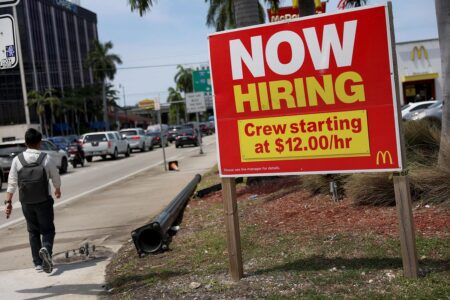Michael Ligon, Author, Serial Entrepreneur, Real Estate Investor, Stock Trader & cofounder of The Ligon Group.
A tariff is a tax imposed by a government on imported goods and services. Countries use tariffs as a tool to regulate trade, protect domestic industries and generate revenue. When a foreign product enters a country, the tariff increases its price, making it less competitive against locally produced goods.
My interest in how macroeconomic factors impact real estate, business strategy and financial markets has led me to explore tariffs. While often viewed as political tools, tariffs influence supply chains, construction costs and investor sentiment. I hope this article helps business leaders, real estate investors and entrepreneurs navigate these complexities to help make informed decisions in today’s global trade environment.
How Do Tariffs Work?
Governments apply tariffs as a percentage of the value of imported goods. For example, if the U.S. imposes a 10% tariff on imported steel, a shipment worth $1 million would face an additional $100,000 in costs. Importers must pay this fee, which often leads to increased prices for businesses and consumers. There are two main types of tariffs:
1. Ad valorem tariffs: A percentage of the item’s value.
2. Specific tariffs: A fixed fee per unit of the item (e.g., $10 per ton of steel).
Benefits Of Tariffs
Tariffs are often used strategically to achieve economic and political goals. Some key benefits include:
Protecting domestic industries: By making imported goods more expensive, tariffs encourage consumers to buy local, supporting domestic businesses and preserving jobs.
National security: Certain industries, like defense and energy, are considered critical. Tariffs may help protect these sectors from foreign dependency.
Revenue generation: Tariffs provide a source of income for governments, funding infrastructure, social programs and other national projects.
Trade negotiation leverage: Countries can use tariffs as a bargaining tool in trade negotiations, pressuring trading partners to lower their own trade barriers.
Political leverage: The mere threat of tariffs is often used in diplomatic negotiations, not just for trade but for other political and economic matters. Countries may leverage tariffs to gain concessions on unrelated issues such as intellectual property rights, environmental regulations or military agreements.
Negative Effects Of Tariffs
While tariffs have benefits, depending on how they are applied, the drawbacks can outweigh their advantages:
Higher prices for consumers: Since importers pass the costs onto businesses and consumers, everyday goods like electronics, food and clothing can become more expensive.
Retaliation and trade wars: When one country imposes tariffs, others may respond in kind, leading to escalating trade restrictions that can hurt businesses and workers globally.
Reduced competition and innovation: With less foreign competition, domestic companies may have less incentive to innovate and improve their products.
Economic slowdowns: Increased costs and decreased global trade can slow economic growth, affecting job markets and investment opportunities.
Specifically in real estate, tariffs can raise development costs, particularly in multi-family construction where materials like steel, aluminum and appliances are often imported. This can lead to:
Delayed projects: Higher material costs may delay projects, impacting market supply.
Higher rents: Landlords may pass on increased construction costs to tenants, affecting affordability.
Reduced profit margins: Investors could see lower returns due to higher overhead costs.
How Do Tariffs Affect Businesses?
Tariffs impact the price of goods you buy daily. If your country imposes tariffs on imported items like cars, electronics or groceries, expect higher prices at the checkout.
For investors, tariffs create uncertainty, affecting stock prices and economic forecasts. A sudden tariff hike can trigger market volatility and disrupt industries dependent on global trade.
For businesses relying on imported materials, tariffs raise production costs, forcing them to absorb the cost, raise prices or seek alternative suppliers. Therefore, anticipating tariff impacts is vital for staying competitive.
Key strategies include diversifying supply chains to reduce exposure to tariff-sensitive regions. Here are some ways to do that:
Geographic diversification: Sourcing materials from multiple countries to reduce dependence on one region.
Onshoring and nearshoring: Bringing supply chains closer to home to avoid trade conflicts.
Supplier negotiations: Building strategic partnerships to mitigate tariff-related cost hikes.
Further Strategies To Remain Competitive Amid Rising Tariffs
When tariffs raise production costs, entrepreneurs and business leaders must adapt by embracing innovative strategies:
Value engineering: Identify cost saving opportunities during the design and construction phase to reduce reliance on expensive imported materials.
Supplier relationships: Strengthen relationships with local suppliers to negotiate better terms and diversify sourcing.
Product innovation: Focus on creating differentiated high value products that can absorb higher costs without losing competitiveness.
Dynamic pricing models: Use dynamic pricing to reflect changing costs, giving businesses flexibility in adjusting to fluctuating tariffs.
Alternative Sourcing For Real Estate Firms
Perhaps one of the the biggest factors for those in real estate and construction, tariffs on imported materials can have a direct impact on project budgets. To mitigate these effects real estate firms should consider alternative sourcing strategies:
Domestic manufacturing: Explore local manufacturers and suppliers to reduce exposure to international tariffs.
Material substitution: Consider using alternative materials that are not subject to tariffs without compromising quality or safety standards.
Recycled and sustainable materials: Incorporate sustainable construction materials that are often less impacted by tariff fluctuations.
Regional trade partners: Look to shift procurement to countries with favorable trade agreements to lower import costs.
Are Tariffs Good Or Bad?
Tariffs are tools that must be used wisely. While they can protect domestic industries and jobs, they may also raise prices, trigger trade wars and slow economic growth. Their impact depends on how they are applied, the global trade environment, and a country’s long-term strategy.
In commercial real estate, sectors like construction and manufacturing, reliant on imported materials, face higher costs from tariffs. However, domestic manufacturing and warehousing can actually benefit as companies move operations back onshore.
Over time, tariffs have the power to reshape supply chains and impact multi-family development by boosting local sourcing and the demand for domestic suppliers and contractors; raising development costs; and shifting investment strategies, largely to sectors less affected by trade disruptions.
Overall, for consumers, business owners and investors, staying informed about tariffs is crucial for making smarter financial and strategic decisions.
Forbes Business Council is the foremost growth and networking organization for business owners and leaders. Do I qualify?
Read the full article here











